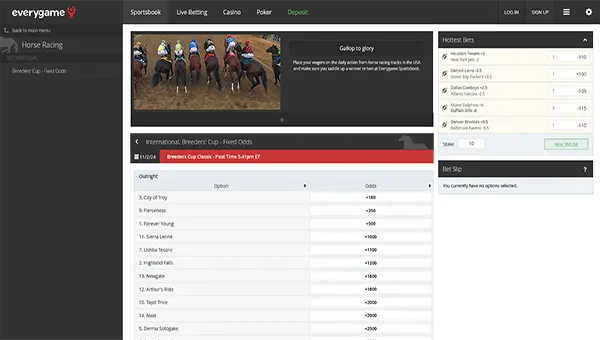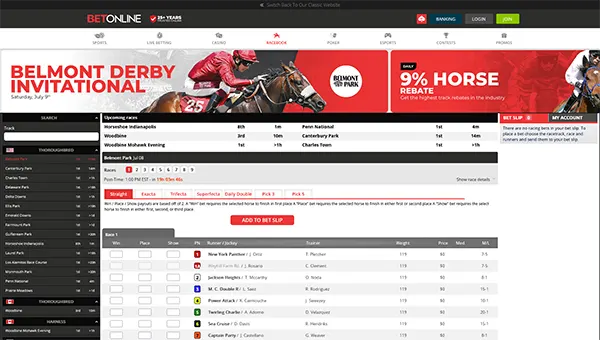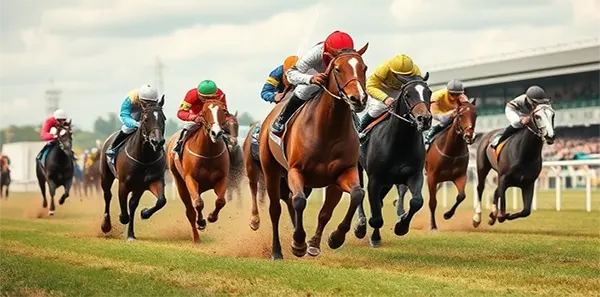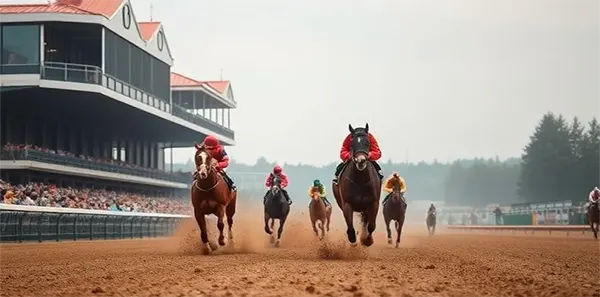Horse Racing Beginners Guide
Read this horse racing beginners guide to find everything you need to know from the basics up to how to find winning horses.
A Horse Racing Beginners Guide: Everything You Need to Know
Horse racing isn’t a competition where the fastest horse wins. It is also a complex blend of tradition, athleticism, and strategy. No doubt this kind of racing has captivated people for centuries. With a beginning as a pastime of ancient civilizations, as people and cultures grew. it was logical that changes in racing would happen.
Horse racing has evolved into a multi-billion-dollar global industry. Racing horses is a sport that bridges cultures, generations, and lifestyles.
One of the most fascinating aspects of horse racing is its global charm. Whether you’re at the Kentucky Derby in the United States, or cheering at the Royal Ascot in England. You may even be marveling at the Dubai World Cup. Understand each event highlights a unique blend of high-stakes competition and cultural pride.
A Glimpse Into History
Horse racing’s roots run incredibly deep, tracing all the way back to ancient Greece, Rome, Egypt, and Babylon, where it was a popular form of entertainment for commoners and royalty. By the 12th century, horse racing gained popularity in England as knights returned with prized Arabian horses, which they bred with local mares to create powerful racing breeds. Fast-forward to today, and the sport is still a global phenomenon, celebrated for its deep traditions and showmanship.
Why It’s More Than Just a Sport
At its core, horse racing is a celebration between humans and horses. It’s not just about speed, it’s about teamwork, trust, and determination. Every race is a delicate dance between a well-trained jockey and a powerful, intelligent horse, both relying on split-second decisions to beat the competition.
But beyond the track, horse racing is filled with culture. The fashion, the traditions, the anticipation of placing a bet – it all contributes to the experience. For some, it’s a social occasion, a chance to dress up and mingle. For others, it’s a deep game of strategy, scouring statistics and odds to predict the outcome of each race.

Understanding the Basics of Horse Racing Beginners Guide
If you’re new to horse racing, the terms, formats, and traditions might seem a bit overwhelming at first. Don’t worry though, as once you understand all the basics, you’ll see why it’s one of the most exciting sports in the world. From understanding the different types of races to learning the important terminology, this following information will lay the groundwork for your knowledge into horse racing.
The Details of a Race: Tracks, Distances, and Formats
At its simplest, horse racing is a competition where horses run against one another to cross the finish line first. However, there’s a lot more happening behind the scenes than meets the eye.
Race Tracks
Races take place on tracks that can vary dramatically in size, surface, and layout. Some tracks are oval-shaped, while others have more unique shapes and configurations. Surfaces can range from dirt and turf (grass) to synthetics, each affecting how a race unfolds. For example, turf honours speed, while dirt may be better for endurance.
Distances
Races aren’t all the same length. They range from sprints 5–7 furlongs to long-distance marathons of over 2 miles (3.2 kms). Some horses excel at short bursts of speed, while others are bred for stamina over extended distances.
Formats
While most races are flat (done on level ground), others test a horse’s jumping ability. The main formats include:
- Flat Racing: This is the most common one, where horses race without obstacles.
- Steeplechase: Races that have hurdles and water jumps.
- Harness Racing: Horses pull a lightweight cart called a sulky, driven by a jockey seated behind them.
Horse Racing Beginners Guide and the Types of Racing
Each region and event puts its own spin on the sport, but here are the primary types of horse racing you’ll most likely see:
- Thoroughbred Racing: The most recognized form of horse racing worldwide, featuring powerful horses bred for speed and agility.
- Quarter Horse Racing: Popular in the U.S, these short races highlight the speed over 400 meters or less.
- Arabian Racing: Showcasing the endurance and grace of Arabian horses, known for their ability to perform well over long distances.
- Harness Racing: A slower-paced but highly strategic format where Standard bred horses pull sulkies.
- Endurance Racing: A long-distance test of stamina, often spanning 50–100 miles (80-160 kms), where pacing and horse care are fundamental.
Horse Breeds Used in Racing and Their Unique Traits
When it comes to horse racing, not all breeds are created equal. Each breed has special physical and mental traits that make it suited to specific types of racing:
Thoroughbreds
Known as the kings of the racetrack, Thoroughbreds are bred for speed, stamina, and agility. Their long legs, deep chests, and powerful muscles allow them to do extremely well in flat races, making them the most common breed in the sport.
Quarter Horses
Appropriately named for their ability to dominate quarter-mile (0.40 kms) sprints, these horses are stockier and more muscular than Thoroughbreds, capable of incredible speeds over short distances.
Arabians
Recognized for their endurance and intelligence, Arabians do well in long-distance and endurance racing. Their smaller frames and energy usage make them perfect for challenging courses.
Standardbreds
Specifically bred for harness racing, Standardbreds are strong, calm, and reliable, with unique gaits like trotting or pacing.
Horse Racing Beginners Guide and What Makes a Winning Racehorse
A winning racehorse has a mix of raw talent, genetics, and exceptional training. Key factors that are known to make an impact on this include:
- If they are Pedigree: Bloodlines are critical in racing, with certain sires (male horses) known for passing on traits like speed and endurance.
- Their Conformation: A horse’s physical structure, such as leg length, back strength, and muscle tone, directly impacts its performance.
Conclusion to the Horse Racing Beginners Guide
Throughout the horse racing guide for beginners we show it is more then a sport and helped you understand the basics. We also looked at the different types of horses and and their traits.
Be sure to keep in mind that if you visit a racetrack or want to bet virtually on a race, there are different ways to bet. This may allow you to win a bet even if you decide to bet on a horse to end in second or third. Be sure to read the article for how to bet smartly on horse racing.
Keeneland

Longchamp














